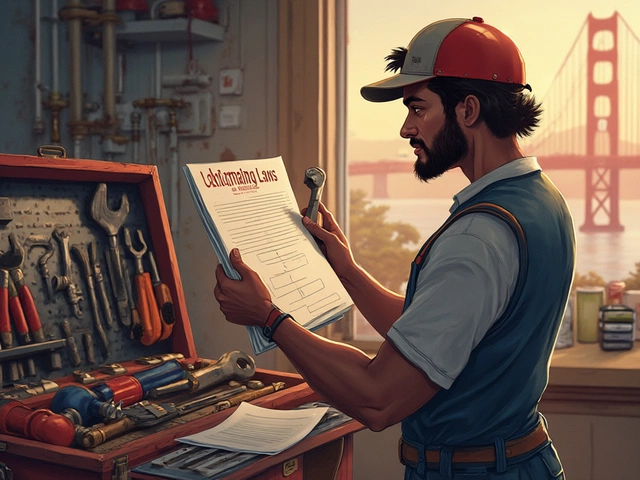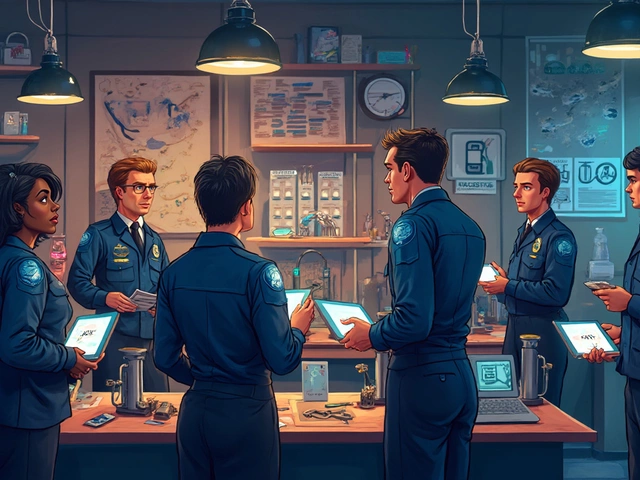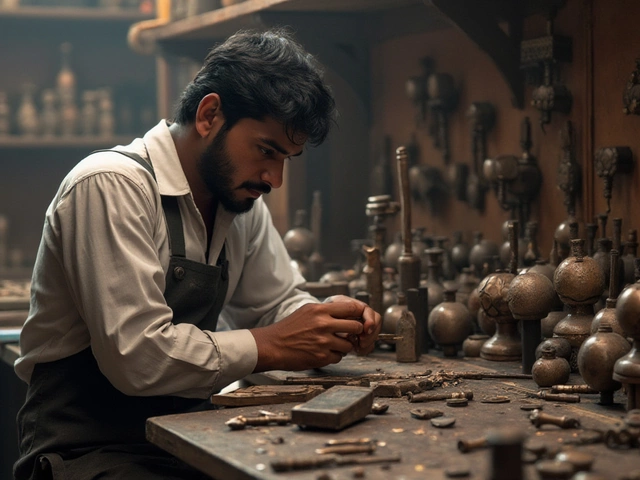You might think all diploma courses in India are the same length, but that’s way off the mark. The truth? Some diplomas wrap up in just six months, while others stretch to three years. So, if you’re eyeing a quick skill boost or planning a serious head start in your job hunt, knowing these timeframes can save you from guesswork.
Let’s get practical—plenty of students choose diplomas for a faster track to jobs. It’s not just about skipping years of college; it’s about picking what fits your schedule, your budget, and your future plans. Course duration actually depends on more than just the subject you pick. It can shift based on when you join (after 10th or 12th), whether you go full-time or part-time, and the institute's quirks. Even things like online vs offline classes can pack a punch in how long your course will last.
- What Is a Diploma Course?
- Typical Duration of Diploma Courses in India
- How Duration Varies by Field
- Diploma After 10th vs. After 12th
- Factors That Affect Course Length
- Tips for Choosing the Right Diploma
What Is a Diploma Course?
A diploma course in India is a short-term program that teaches you practical skills for a specific job or industry. It’s not as long as a full degree, but it’s way more focused. If you’re looking for a quicker step into the workforce, this route makes sense.
Unlike traditional degree programs like a Bachelor’s, diploma courses cut out the broad academic stuff and get straight to what you need. You’ll find these courses in engineering, computer science, healthcare, design, hotel management, and way beyond. Some diplomas are technical, while others are hands-on or business-focused. Pick the area that matches your interest or job goals.
Here’s a quick look at how diploma courses stand out:
- Shorter duration (as brief as 6 months, usually maxing out around 3 years)
- Focused curriculum—job skills, not theory overload
- Admission after 10th or 12th grade, depending on the course
- Lower fees than full degrees
- Available in government and private institutes, polytechnics, and even online
Diploma courses aren’t just for school leavers; lots of working folks use them to upskill or switch careers. As per the diploma courses data from All India Survey on Higher Education, around 12% of technical students in India take the diploma path every year. That’s over 13 lakh students!
| Course Type | Entry Level | Typical Duration |
|---|---|---|
| Polytechnic (Engineering) | After 10th | 3 years |
| ITI (Industrial Training Institute) | After 10th | 1-2 years |
| Diploma in Nursing | After 12th | 2-3 years |
| Diploma in Computer Apps | After 12th | 1 year |
| Diploma in Fashion Design | After 10th or 12th | 1-2 years |
This gives you a snapshot of how flexible these programs can be. Whether you want to fix bikes, manage hotels, or design websites, there’s a diploma course out there that’s likely a perfect fit for you.
Typical Duration of Diploma Courses in India
If you ask ten people about the length of diploma courses in India, you’ll probably get a bunch of different answers—and they’d all be right. Here’s how it actually breaks down: diploma courses in India are usually short-term, but the timeline depends on what you sign up for. The most common range? Anywhere from six months to three years, which is way less than most degree programs.
For a quick look, here’s how the popular options stack up:
| Type of Diploma | Usual Duration |
|---|---|
| Certificate Diploma | 6 – 12 Months |
| Polytechnic Diploma | 3 Years |
| Advanced Diploma | 1 – 2 Years |
| Postgraduate Diploma | 1 – 2 Years |
If you’re looking at practical streams—like engineering, hotel management, or fashion design—most students go for a 1 to 3 year course. For quick upskilling, especially in IT or design, there are shorter versions you can finish in under a year. One quirky example: the Diploma in Nursing in India often goes for three years, but a Diploma in Digital Marketing can wrap up in six months.
Most courses kick off after either your 10th or 12th board exams. Polytechnic diplomas right after 10th go for three years. But if you wait until after 12th, that same diploma shrinks down to two years because you get to skip a year thanks to your higher qualification.
Here are some key things to keep in mind:
- Full-time courses run faster than part-time ones—you’re likely to finish in the minimum listed period if you attend regular classes.
- If you go the distance learning or evening batch route (popular with working folks), courses might stretch a bit longer, sometimes by six months to a year.
- Some courses have internships or in-company training counted in their duration, so check whether the timeline includes these add-ons.
Picking a course isn’t just about how soon you can get out; it’s about what you learn along the way. Looking at the time commitment before signing up can seriously help you plan your moves, especially if you want to balance work or other studies.
How Duration Varies by Field
This is where things get interesting. The length of diploma courses in India can really swing depending on what subject you pick. There’s no one-size-fits-all. For example, a diploma in engineering usually means a commitment of 3 years, while diplomas in fields like computer applications or hotel management often clock in at just 1 year.
Let’s get straight to the details. Here’s a breakdown of what you can expect in some popular streams:
| Field | Diploma Duration | Common Entry Point |
|---|---|---|
| Engineering (Polytechnic) | 2 – 3 years | After 10th/12th |
| Computer Applications (DCA) | 6 months – 1 year | After 12th |
| Hotel Management | 1 – 2 years | After 12th |
| Fashion Designing | 1 – 2 years | After 10th/12th |
| Paramedical (like DMLT, Radiology) | 1 – 2 years | After 12th (Science) |
| Business Management | 1 year | After 12th/Graduation |
Here’s a little insider tip—engineering diplomas are one of the longest in the group, while creative and IT fields often let you finish up much quicker. You’ll even find some paramedical diplomas that are wrapped up in just a year if you choose an intensive program.
“Courses like Polytechnic take about three years because they have more practical training and technical detail than diploma courses in other streams.” — AICTE (All India Council for Technical Education)
If you’re short on time, computer or business diplomas may be your best bet. But if you’re eyeing industry-specific skills—say, in engineering, health care, or architecture—expect to spend a bit more time to learn everything you need. Always check with the specific college or institute, too, since their curriculum or pace can tweak how long it takes to finish.

Diploma After 10th vs. After 12th
Everyone’s heard someone say, “Do a diploma after 10th, you’ll get a job faster.” There’s some truth to that, but the real picture is a bit more detailed. The biggest difference between doing a diploma after the 10th and after the 12th is the course level, options, and duration. If you’re wondering how these paths stack up against each other, here’s what you need to know.
Jumping into a diploma right after Class 10 usually means joining courses like Polytechnic (Engineering), ITI (Industrial Training Institute), or fields like D.Ed (Diploma in Education) and pharmacy. These courses focus more on basics and practical stuff. Most polytechnic diplomas after the 10th run for 3 years, while ITI trades range from 6 months to 2 years. These programs are great if you want to get into the workforce quickly or climb up the technical ladder later.
Now, if you wait until after Class 12, you get a different range of options. The major perk here is access to specialized diplomas—think in areas like Hotel Management, Computer Applications, Fashion Designing, or even Paramedical fields. Durations are usually shorter, anywhere from 1 to 2 years, because you’ve already covered a lot of basics in 12th standard. And honestly, employers often look favorably at higher secondary completion too, especially in professional sectors.
| Criteria | Diploma after 10th | Diploma after 12th |
|---|---|---|
| Typical Duration | 2-3 years | 1-2 years |
| Focus Areas | Engineering, ITI, D.Ed, Basic Sciences | Hotel Management, Computer Applications, Paramedical, Designing |
| Entry Requirement | Pass in Class 10 | Pass in Class 12 (relevant stream may be required) |
| Job Readiness | For entry-level technical jobs | For advanced or specialized roles |
One more thing most students miss: doing a diploma course after 10th makes you eligible for lateral entry to the second year of a bachelor’s program like engineering. That can shave off a year, which is a smart move if you want to save both time and money. But diplomas after 12th open doors to niche careers—like Medical Lab Technology or Animation—that simply aren’t available to 10th pass outs.
So if you’re stuck choosing, think about how quickly you want to work, how specialized your career plan is, and whether you’d rather dive deep into a subject or keep your options flexible for the future.
Factors That Affect Course Length
If you’re weighing your options for a diploma course in India, here’s what actually impacts how long you’ll be studying. It’s rarely just about the subject—there’s more going on behind the scenes.
First off, entry point matters. If you join right after 10th standard, courses often last two to three years (say, polytechnic diplomas). But join after 12th, and many diplomas, like those in computer applications or hotel management, take one year or even less. Here’s a simple breakdown:
| Entry Level | Common Duration |
|---|---|
| After 10th | 2 to 3 years |
| After 12th | 1 to 2 years |
| Postgraduate | 1 year |
Next up: full-time vs. part-time. Full-timers are in and out faster (maybe a year), but part-timers could take double the time, since you’re usually balancing work or family. Distance learning and online diplomas can also stretch longer because you study at your own speed, though some institutes set a strict cap—like IGNOU, which allows up to three years to finish most of its diplomas.
The specific field or stream is another big factor. Technical and engineering diplomas (like those in civil or mechanical fields) usually run two to three years, simply because the curriculum is dense and includes practical training. Creative fields, like graphic design or photography, can be way shorter—sometimes just six to twelve months.
Don’t forget about the rules of the institute itself. Some private institutes speed things up, squeezing content into a shorter span, but government polytechnics typically stick to a fixed duration for standardization. Accreditation plays a part, too—a diploma recognized by AICTE or UGC follows their guidelines, which keeps things uniform but not always faster.
Here’s a quick list of what to check before enrolling:
- Admission requirements (10th, 12th, or even graduation)
- Class mode: full-time, part-time, or online/distance
- Field/stream—technical usually means longer
- Institute policies and accreditation
- Personal flexibility for projects or internships
One surprising fact—according to the AICTE’s 2023 report, technical diplomas are the most popular and make up almost 60% of diploma enrollments in India. That’s a lot of people committing to longer courses for better job prospects.
Tips for Choosing the Right Diploma
Picking the right diploma course is more than just picking a subject you sorta like. With so many options in India, you really need a plan. Here are a few tips that can make the process easier—and help you avoid wasting time or money.
- diploma courses in India come in all shapes and sizes. There are technical diplomas like Polytechnic (popular after 10th), or creative ones like Graphic Design, Animation, and Event Management.
- Look at the duration upfront. For example, most ITI diplomas take 1-2 years, but a D.Pharm (Diploma in Pharmacy) is two years, and a Diploma in Engineering is three years. If you want to join work fast, go for short-term diplomas like Computer Applications (6-12 months).
- Check whether the course is recognized by AICTE, UGC, or relevant State Boards. Recognition matters for jobs and further studies.
- If you work or have other commitments, look for part-time or online options. For example, many open universities offer diplomas you can finish at your own pace.
- Read up on placement stats and average salaries. Colleges often share this info. Some ITI trades have a placement rate of 80% or more; in contrast, niche diplomas in new fields might not post such high numbers but could open up unique career paths.
Here’s a quick look at the durations for some popular diploma options:
| Course Name | Usual Duration | Level |
|---|---|---|
| Polytechnic/Engineering | 3 years | After 10th |
| Diploma in Pharmacy (D.Pharm) | 2 years | After 12th (Science) |
| ITI Trade Courses | 1-2 years | After 10th |
| Diploma in Computer Applications | 6-12 months | After 10th/12th |
| Diploma in Fashion Designing | 1-2 years | After 10th/12th |
| PG Diploma in Management | 1 year | After Graduation |
One last thing—don't fall for any course just because it looks easy or trendy. Always talk to counselors or people working in that field. Check reviews and alumni feedback online. Some colleges even offer demo classes or allow you to meet past students. Take advantage of that. If possible, visit the campus and see if the environment fits your vibe.





Write a comment